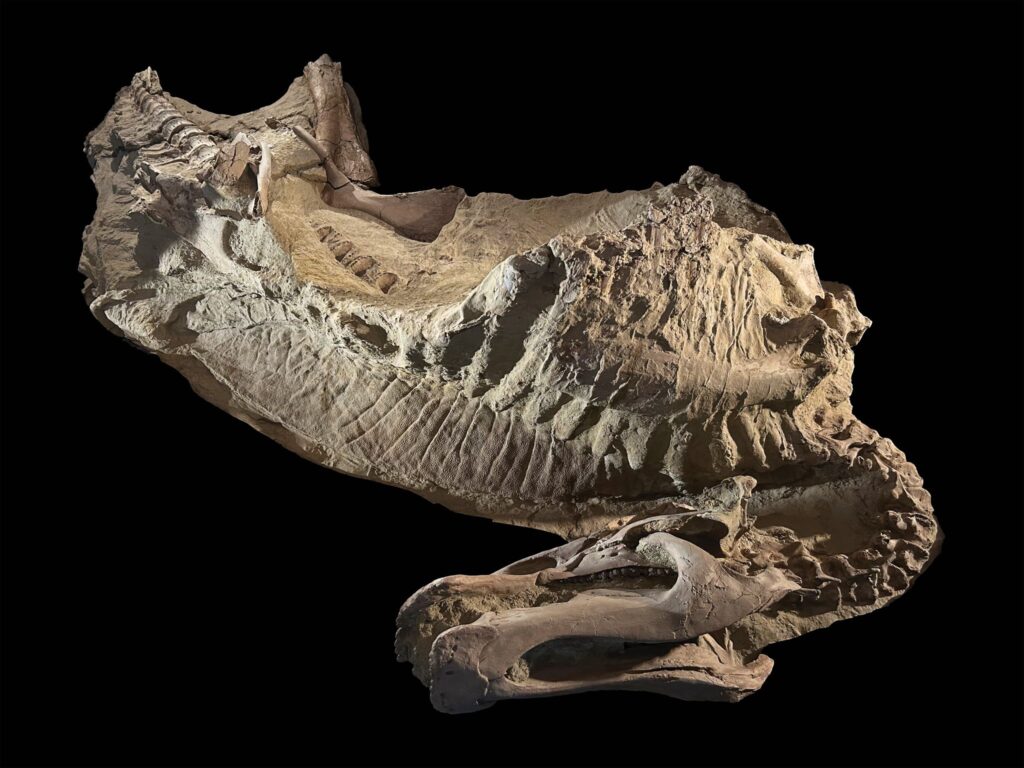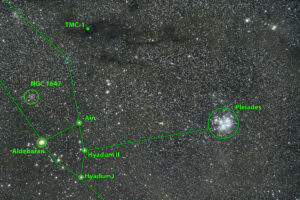
This image provided by the University of Chicago shows a mummy of a duck-billed dinosaur resting on its ribcage. (Tyler Keillor, The University of Chicago via AP)
NEW YORK (AP) — In a groundbreaking discovery, researchers have unearthed a pair of rare dinosaur mummies that offer a unique glimpse into the prehistoric world. Unlike the wrapped mummies of ancient Egypt or the naturally preserved human remains found in bogs, these dinosaur mummies have been preserved in an unexpected manner, providing scientists with invaluable data to reconstruct the appearance and lifestyle of these ancient creatures.
These extraordinary finds were made in a region of eastern Wyoming, often referred to as the “mummy zone,” where scientists have been uncovering dinosaur mummies for over a century. The latest discovery includes the remains of a juvenile duck-billed dinosaur, estimated to be only a few years old at the time of its death.
Unveiling the Mystery of Dinosaur Mummification
The process of mummification observed in these dinosaurs differs significantly from traditional fossilization. According to Paul Sereno, a paleontologist at the University of Chicago involved in the study, these mummies were preserved without any fossilized skin. Instead, impressions of their skin and scales were left on a thin layer of clay, which hardened over time with the aid of microbial activity.
This method of preservation has been documented in other organisms, but its occurrence on land was unexpected. The new findings, published in the journal Science, suggest that other mummies found in the Wyoming site may have undergone a similar preservation process.
Implications for Paleontological Research
The discovery of these mummies is not just a scientific curiosity; it holds significant implications for paleontological research. By studying the clay templates left by the dinosaurs, scientists can reconstruct a clearer picture of their physical characteristics, including features like tail spikes and hoofed feet.
Mateusz Wosik, a paleontologist at Misericordia University, emphasizes the importance of looking beyond bones to identify skin and soft tissue impressions, which can often be overlooked or dismissed. “Understanding how dinosaur mummies form can help scientists uncover more of them,” Wosik noted.
“Every single time we find one, there’s such a treasure trove of information about these animals,” said Stephanie Drumheller, a vertebrate paleontologist at the University of Tennessee, Knoxville.
Historical Context and Future Prospects
The discovery of dinosaur mummies is not new, but each find adds a new layer of understanding to the prehistoric world. The first significant discovery of a duck-billed dinosaur mummy dates back to 1908, also in Wyoming. These mummies have provided crucial insights into the growth and lifestyle of dinosaurs, offering a snapshot of their existence millions of years ago.
As scientists continue to explore the “mummy zone,” the potential for new discoveries remains high. Each new find contributes to a more comprehensive understanding of dinosaur biology and ecology, helping to fill gaps in the fossil record.
The ongoing research into these mummified remains underscores the dynamic nature of paleontology, where every discovery can challenge existing theories and open new avenues of inquiry. As the scientific community continues to unravel the mysteries of these ancient giants, the world watches with anticipation for the next breakthrough.
The Associated Press Health and Science Department receives support from the Howard Hughes Medical Institute’s Department of Science Education and the Robert Wood Johnson Foundation. The AP is solely responsible for all content.






